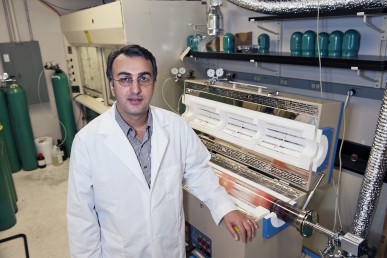
An alternative, never-ending source for fuel may be on the way, as researchers from the US have devised a rather cheap way to convert carbon dioxide into fuel.
This discovery has been deemed doubly important, as the method they have devised does not entail much cost, and can be done on an industrial scale at very low prices. The study, done by a team of researchers from the University of Illinois at Chicago, was published in the Nature Communications journal.
The scientists developed a certain catalyst to help them to turn carbon dioxide into fuel. This catalyst is called molybdenum disulfide, which is an ionic liquid that can transfer electrons into the molecules of carbon dioxide, during the chemical reaction.
"With this catalyst, we can directly reduce carbon dioxide to syngas without the need for a secondary, expensive gasification process," said Mohammad Asadi, co-first author of the research, and Graduate student at the University of Illinois at Chicago, in a press release. "This is a very generous material. We are able to produce a very stable reaction that can go on for hours."
There are other chemical systems, by which, this can be done, but in all these reactions, the by-product is carbon monoxide. However, with the use of molybdenum disulfide as a catalyst, carbon dioxide is turned into syngas.
Syngas is a moisturized version of carbon monoxide and particles of hydrogen mixed together. The properties of syngas are very similar to that of gasoline. In fact, the researchers believe that syngas itself is the precursor of gasoline. This catalyst can also regulate the proportion of moisturized carbon monoxide to hydrogen, according to the needs of the maker.
"Our whole process is to move from laboratory experiments to real-world applications," said Amin Salehi-Khojin, who developed the catalytic process and is also a Professor of Industrial and Mechanical Engineering at the University of Illinois at Chicago. "This is a very generous material. We are able to produce a very stable reaction that goes on for hours. This is a real breakthrough that can take a waste gas – carbon dioxide – and use inexpensive catalysts to produce another source of energy at large scale, while making a healthier environment."

















